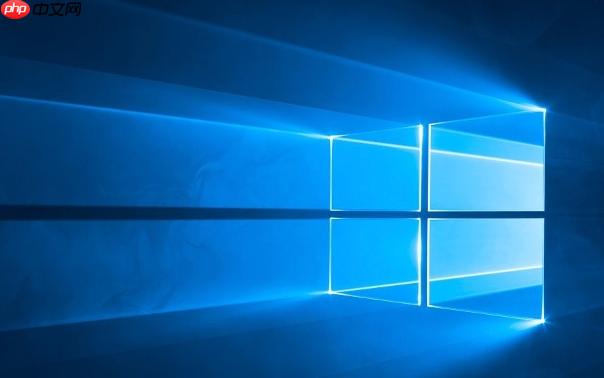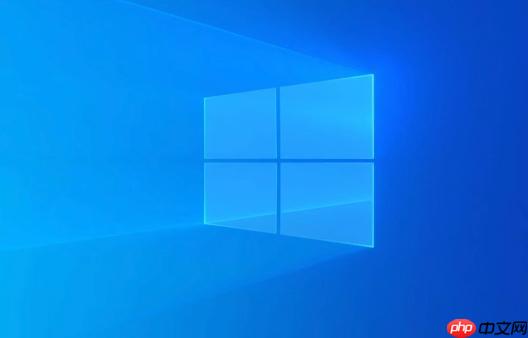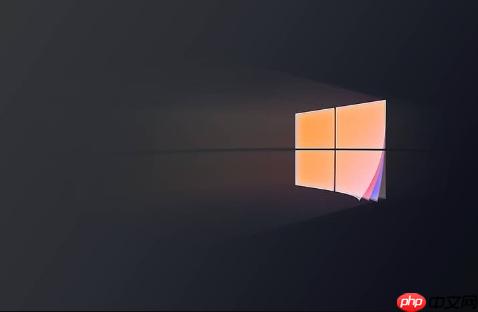The issue that win7 does not recognize the multi-monitor configuration and causes the extended desktop settings to fail can be solved by the following methods: 1. Update the graphics card driver, uninstall the old version and manually download and install the latest driver. 2. Check whether the monitor cable is stable or replace the cable test; 3. Confirm the compatibility and limitations of the graphics card and monitor interface; 4. Go to BIOS to check the graphics card related settings or restore the default settings; 5. Click “Detect” in the win7 screen resolution settings or manually add the monitor; 6. Try running the driver in compatibility mode to resolve system compatibility issues; 7. If all methods are ineffective, the graphics card may be damaged and needs to be replaced and tested. In addition, if the mouse movement is not smooth after expansion, the resolution and refresh rate of the display should be unified, and the mouse driver should be updated.

Win7 does not recognize multi-monitor configuration, extended desktop settings fail? Don’t panic, this problem is actually quite common and has many reasons. Let me give you a stroke to ensure that you can find a solution that suits you.

solution

-
Driving Problems: Forever Suspects

The driver is not installed properly, or the driver version is too old, which is the number one suspect that causes the display to not recognize. Go to your graphics card manufacturer’s website (NVIDIA, AMD, Intel) and download the latest and most stable drivers. Note that you must uninstall the old driver before installing the new one, you can use DDU (Display Driver Uninstaller).toolUninstall completely.
- Personal Experience: I have encountered a very strange phenomenon before, although the graphics card driver is the latest, it comes with Win7Driver updatesThe function secretly installed an old version for me, causing the extension desktop to fail all the time. Therefore, it is best to download and install manually and disable automatic driver updates for Win7.
-
Hardware connection: check and check
Check that your monitor cable (HDMI, VGA, DVI, DisplayPort) is securely connected. Try changing the thread, maybe the thread is broken. Also, make sure that your graphics card supports multi-monitor output and that your monitor also supports the corresponding interface.
- Tech Tips: Some older graphics cards may not support the use of all interfaces at the same time, such as only one VGA port and one DVI port at the same time. Check your graphics card’s manual to understand its interface limitations.
-
BIOS settings: easily overlooked points
In the BIOS settings of some motherboards, you can set the boot mode and memory allocation of the graphics card. If the BIOS is not set correctly, it can also cause the display to not recognize. Go to the BIOS, find the settings related to your graphics card, and make sure the settings are correct.
- Notes: Modifying BIOS settings is risky, so be sure to do so with caution and do not change settings that you are not sure about. You can try restoring the BIOS default settings to see if the problem is resolved.
-
Win7 display settings: Core area
Right-click on the desktop and select “Screen Resolution”. Here you can see the display that Win7 recognizes. If your display is not showing, click the “Detect” button. If it still doesn’t show up, try adding a display manually.
- Tips: In the “Multi-monitor” drop-down menu, select “Extend these displays”. If you still can’t expand, try selecting “Duplicate these displays” to see if it works. If the replication mode is normal, there is no problem with the display and cables, and the problem may be with the extended mode settings.
-
Compatibility issues: the pain of old machines
Win7 is an old system after all, and some new hardware may have compatibility issues. Try running the graphics card driver in compatibility mode. Right-click on the driver installation file, select “Properties”, in the “Compatibility” tab, select “Run this program in compatibility mode”, select Windows XP or Windows Vista.
-
Graphics card damage: worst-case scenario
If you have tried all of the above methods and still can’t solve the problem, it is likely that your graphics card is broken. Try changing to another graphics card and see if the problem is solved.
- Experience: The probability of damage to the graphics card is actually not high, but it is not impossible. If your graphics card has been used for a long time and you often play large games, then consider the possibility of damage to your graphics card.
What should I do if the mouse movement is not smooth after the Win7 extension desktop settings?
After Win7 expands the desktop settings, the mouse does not move smoothly between different monitors, which may be caused by inconsistent display resolution and refresh rate settings. Make sure that the resolution and refresh rate of all monitors are set to the recommended values and are consistent.
Also, check if your mouse drivers are up to date. Old mouse drivers may not support multi-monitor environments well.
How to quickly switch monitor modes (duplicate, extend, display only on primary monitor) in Win7?
Win7 provides shortcut keys to quickly switch between display modes. Hold down the Windows key + P key, a small window will pop up with different monitor modes to choose from.
- Windows key + P: Cycle between display modes (Copy, Extend, Display only on primary display, display only on secondary monitor).
This shortcut is very convenient and allows you to quickly switch between display modes without having to go into the “Screen Resolution” setting every time.
How do I get the application to open by default on a specified display after Win7 extension of the desktop?
Win7 itself doesn’t offer the ability to directly set which display an app opens on by default. However, there are some indirect ways you can do this.
-
Manual drag: This is the easiest way. After each time you open the app, manually drag it to the display you want. Win7 remembers where the app was last opened, and the next time it opens, it may automatically open where it was last opened.
-
Third-Party Tools: There are third-party tools that can help you set which display the app opens on by default. For example, DisplayFusion is a powerful multi-monitor management tool.
-
DisplayFusion: DisplayFusion lets you set the open location, size, and other properties for each application. It also offers a lot of other useful features such as taskbar enhancements, window management, and many more.
-
Personal advice: If you often need to be between multiple monitorsMobile app, DisplayFusion is a good choice.
-
In short, the problem of Win7 extension desktop setting failure has various reasons and requires patient troubleshooting. From drivers, hardware connections, to BIOS settings, Win7 display settings, check step by step, and you will always find a solution. I hope my experience will help you!
That’s allwin7 systemFor more information on the solution to the failure to recognize multi-monitor configuration _win7 extend desktop settings, please pay attention to other related articles on php Chinese network!